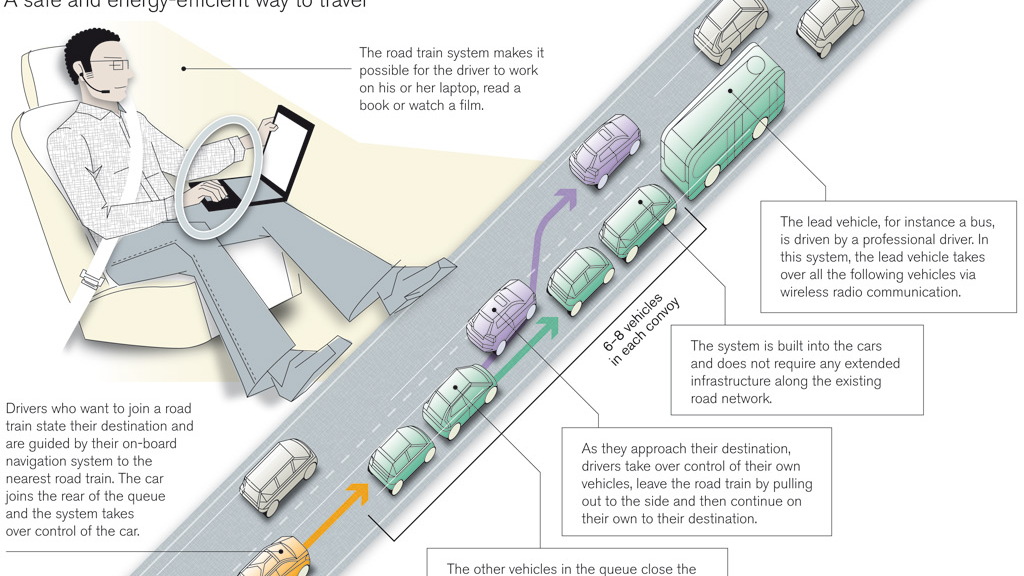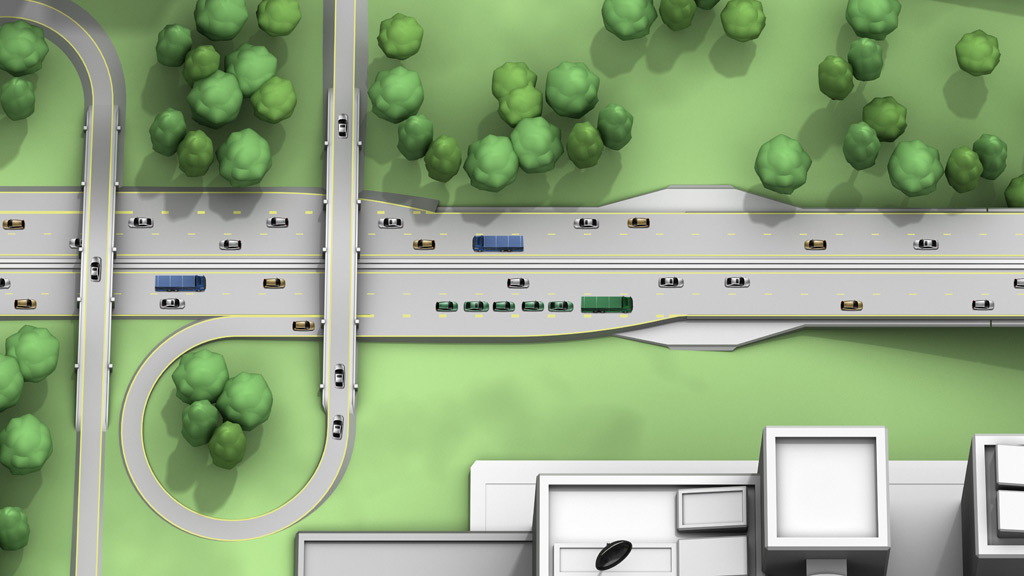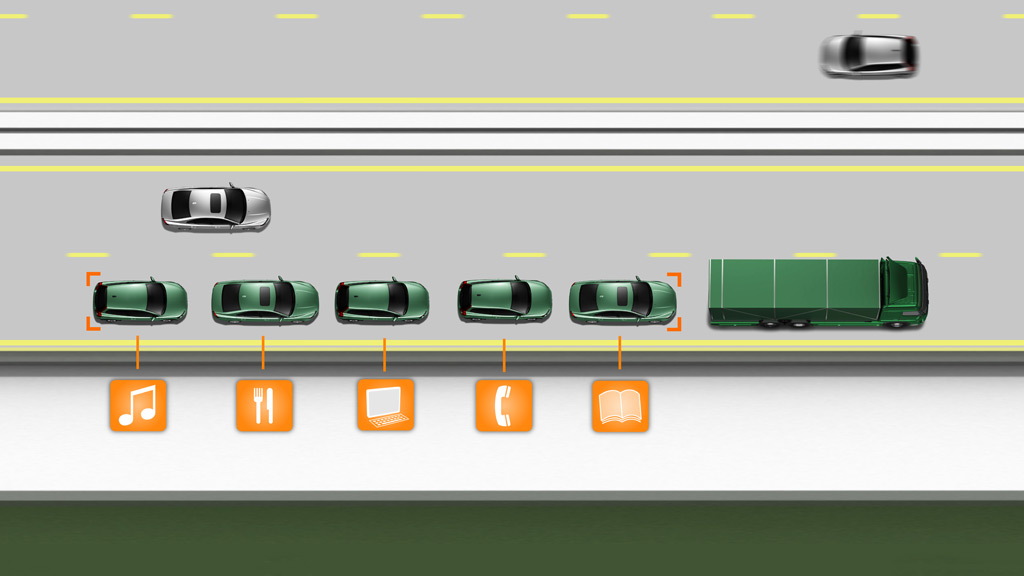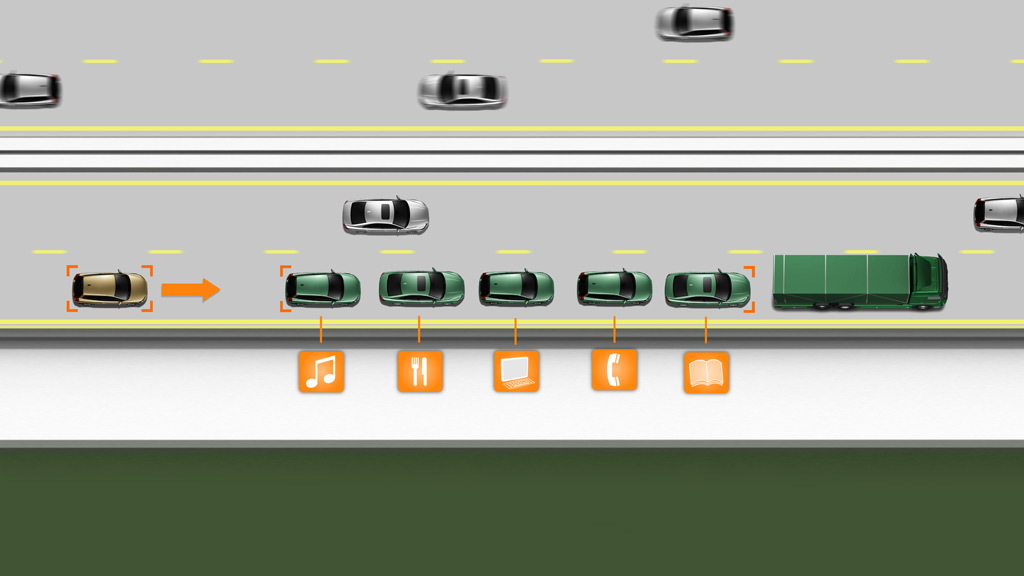A new government-backed initiative in Europe called SARTRE (SAfe Road TRains for the Environment) is being launched to develop and test technology for vehicles that can drive themselves in long road trains on highways. The technology has the potential to improve traffic flow and journey times, offer greater comfort to drivers, reduce accidents, and improve fuel consumption and hence lower CO2 emissions.
Just imagine leaving home in the morning and, just after joining the motorway, meeting up with a number of other cars which inch up to each other, travelling at normal speed in a close-formation convoy. After a few minutes you can let go of the steering wheel and spend your time reading the morning paper, talking on the phone or watching the TV, while your car drives itself in complete safety and also saving fuel.
This is the vision that proponents of SARTRE, which includes automakers like Volvo, are hoping for. Current estimates put a retail launch for self-driving cars at least ten years away.
Known as autonomous driving, this technology means that the vehicle is able to take control over acceleration, braking and steering, and can be used as part of a road train of similarly controlled vehicles.
The first test cars equipped with this technology will roll on test tracks as early as 2011. The vehicles will be equipped with a navigation system and a transmitter/receiver unit that communicates with a lead vehicle. Since the system is built into the cars, there’s no need to extend the infrastructure along the existing road network.

SARTRE self-driving cars
The idea is that each road train or platoon will have a lead vehicle that drives exactly as normal, with full control of all the various functions. This lead vehicle is driven by an experienced driver who is thoroughly familiar with the route. For instance, the lead may be taken by a taxi, a bus or a truck. Each such road train will consist of six to eight vehicles.
A driver approaching his destination takes over control of his own vehicle, leaves the convoy by exiting off to the side and then continues on his own to his destination. The other vehicles in the road train close the gap and continue on their way until the convoy splits up.
The advantage of such road trains is that all the other drivers in the convoy have time to get on with other business while on the road, for instance when driving to or from work. The road trains increase safety and reduce environmental impact thanks to lower fuel consumption compared with cars being driven individually. The reason is that the cars in the train are close to each other, exploiting the resultant lower air drag. The energy saving is expected to be in the region of 20%. Road capacity will also be able to be utilized more efficiently.
Researchers see road trains primarily as a major benefit to commuters who cover long distances by highways every day, but they will also be of potential benefit to trucks, buses, coaches vans and other commercial vehicle types.
As the participants meet, each vehicle's navigation system is used to join the convoy, where the autonomous driving program then takes over. As the road train approaches its final destination, the various participants can each disconnect from the convoy and continue to drive as usual to their individual destinations.
The SARTRE project formally started in September this year and will run for a total of three years.





